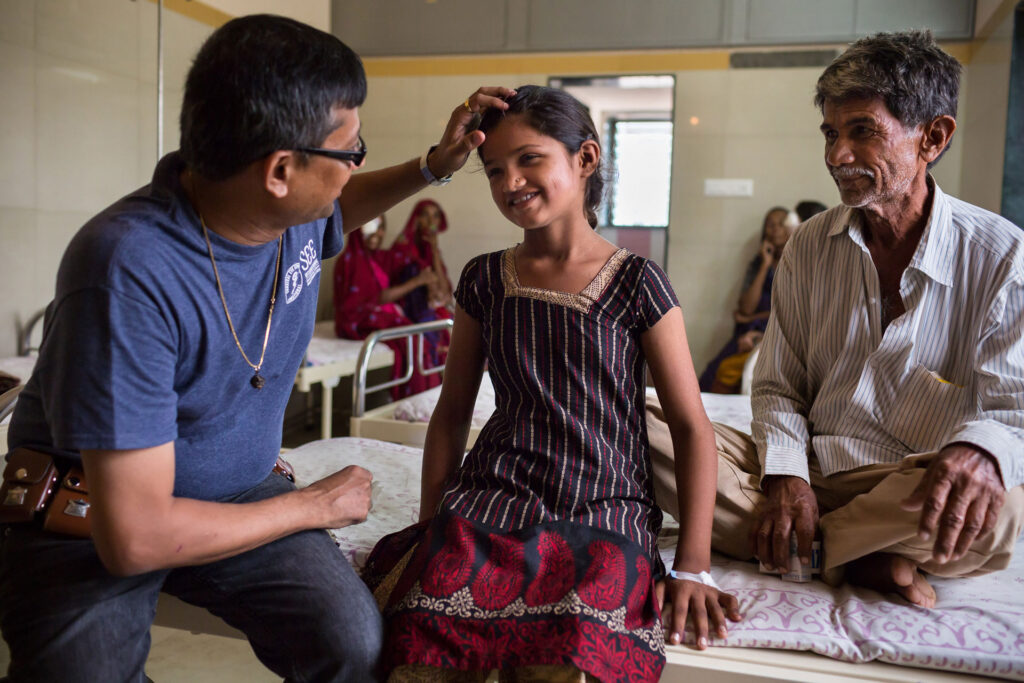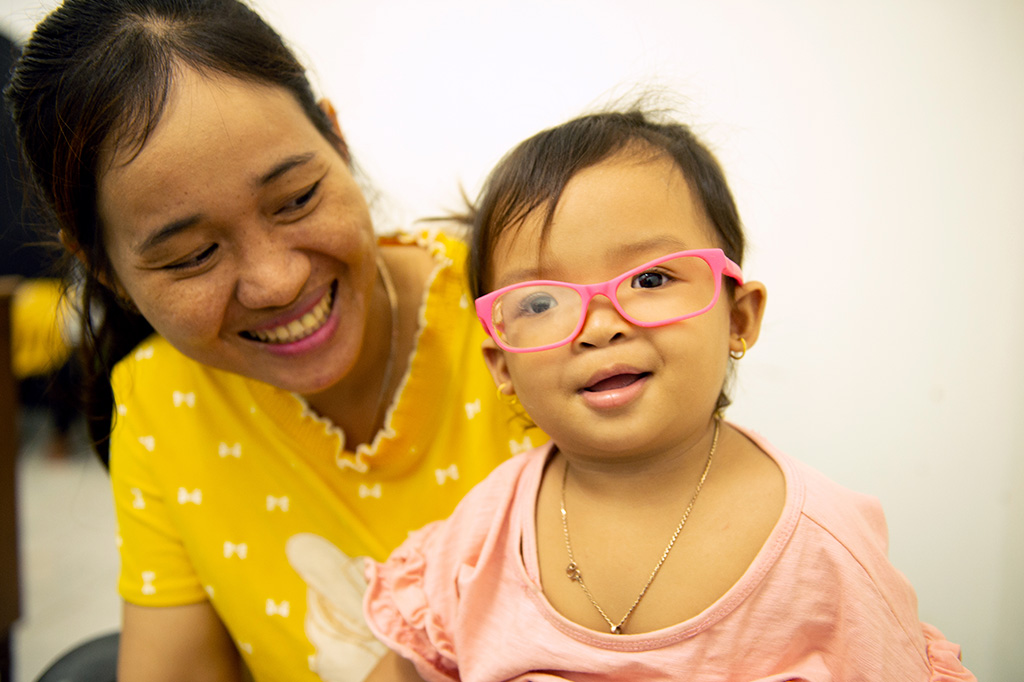Childhood Blindness
Since 1974, SEE has worked diligently around the world to reduce the number of children impacted by blindness. Our network of volunteer surgeons provide free treatment to thousands of patients every year, as well as skill-sharing and training on appropriate surgical techniques to help strengthen local health care infrastructure worldwide.
What is Childhood Blindness?
In 1990, the World Health Organization (WHO) organized the first meeting of experts on the prevention of blindness in children; they estimated that there were 1.5 million blind children in the world. These experts agreed that corneal scarring, mainly from vitamin A deficiency and measles, was the major cause of childhood blindness in most low-income countries. In 1997, after a new system of data collection regarding childhood blindness had been implemented, it was estimated that 45% of blind children were blind by avoidable causes.
Because corneal blindness is gradually declining globally, cataract is becoming a relatively more important cause of avoidable blindness in children. Many pediatric ophthalmologists now remove cataracts and insert Inter-Ocular lenses in the eyes of children as young as 12 months of age.
(Source: National Library of Medicine. Gilbert and Muhit, 2008)

45% of children with vision loss are blind by avoidable causes
Your donation will save someone’s sight
Effects of Childhood Blindness
Visual impairment in childhood has lifelong implications for both the child and their family. Poor vision impacts the child’s development, education, and the care given by families and professionals. It also shapes the adult the child will become, affecting employment and social prospects.
It is important to appreciate that the impact of childhood blindness or visual impairment is different to visual impairment in adulthood, and differs not only in terms of the age of onset and cause of impairment, but perhaps more importantly in terms of the lifetime of disability these children endure, as well as the impact that the child’s visual impairment has on their family dynamics.
It has been estimated that 80% of education is provided through sight. The majority of children with visual impairment are educated in the mainstream setting alongside their sighted peers, and are encouraged to be integral members of society. A 2010 study demonstrated that children with visual impairment or blindness had a lower quality of life in many specific areas, and also overall, than their sighted counterparts. These dynamics were shown to be identical in adult quality of life scores, showing that visual impairment that went untreated in childhood would continue to cause problems in adulthood.

Conditions We Treat
Get Our Monthly Updates
Connect With SEE
Learn More
Donate
(805) 380-7522
Mail donations to:
SEE International
PO Box 981263
W. Sacramento, CA 95798-1263
Home office address:
6500 Hollister, Suite 120
Goleta, CA 93117
Tax ID: #31-1682275


